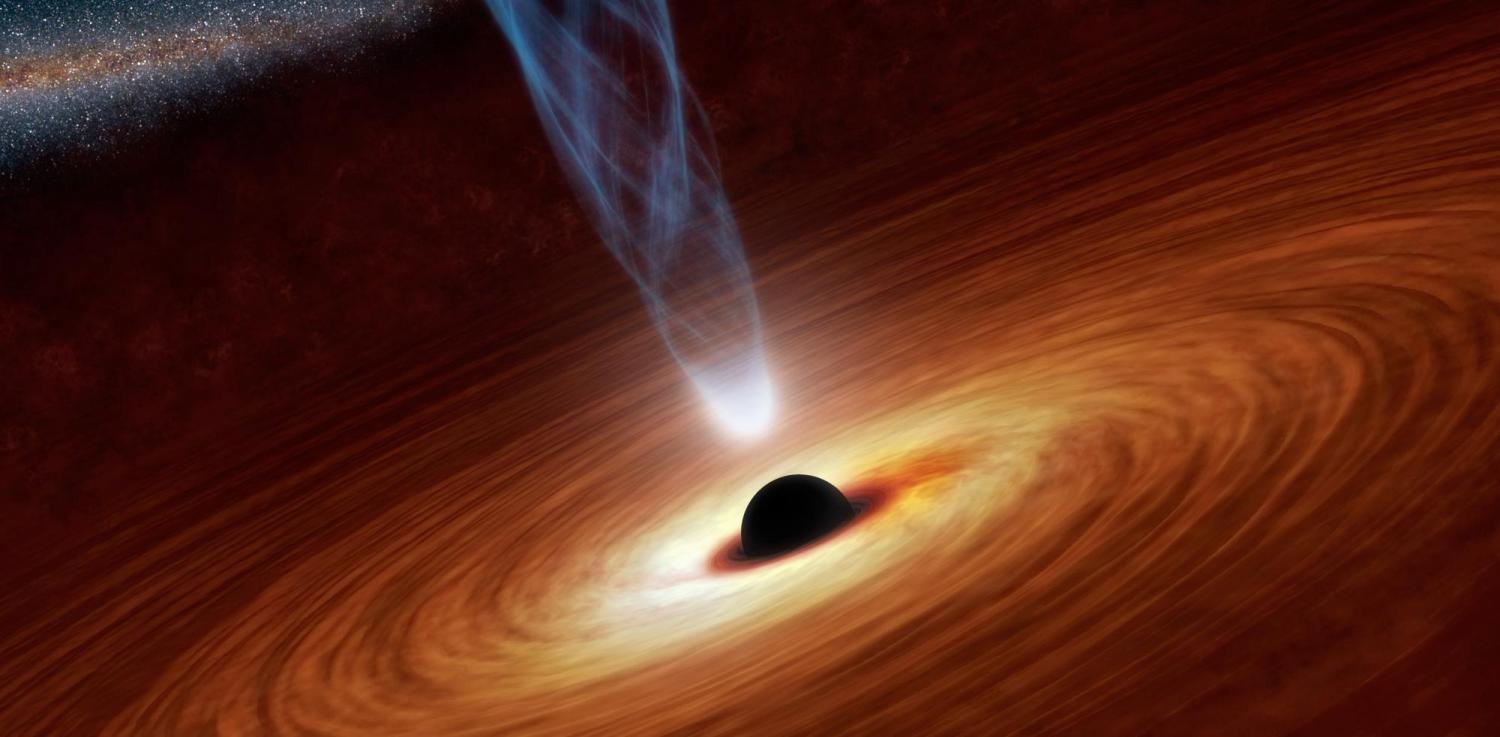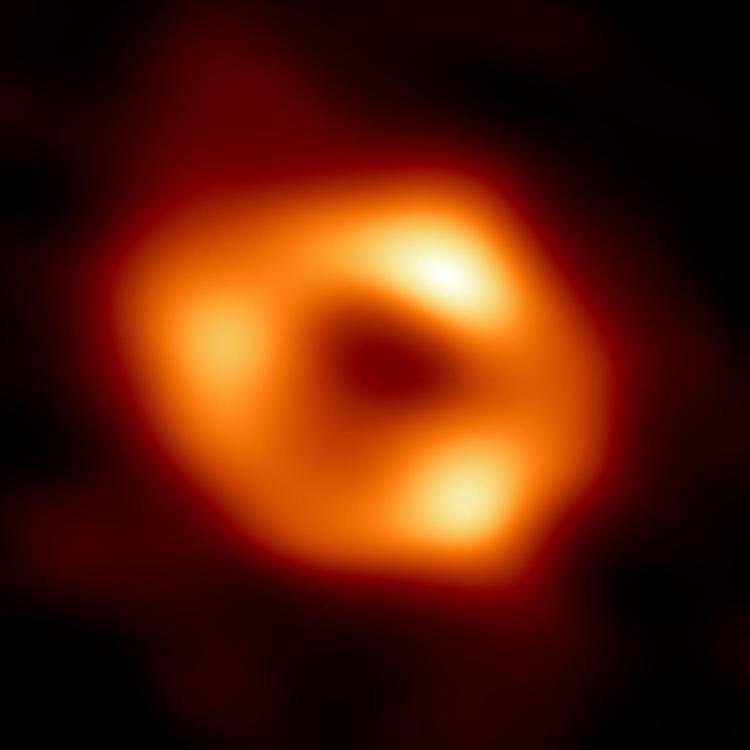
A supermassive black hole emits a jet of energetic particles in this illustration. (Credit: NASA/JPL-Caltech)
Near the center of the Milky Way Galaxy sits an immense object that astronomers call Sagittarius A*. This "supermassive" black hole may have grown in tandem with our galaxy, and it's not alone. Scientists suspect that similar behemoths lurk at the heart of almost all large galaxies in the cosmos.
Some can get really big, said Joseph Simon, a postdoctoral researcher in the Department of Astrophysical and Planetary Sciences at CU Boulder.
"The black hole at the center of our galaxy is millions of times the mass of the sun, but we also see others that we think are billions of times the mass of the sun," he said.
The astrophysicist has dedicated his career to studying the behavior of these hard-to-observe objects. In a recent study, he employed computer simulations, or "models," to predict the masses of the largest supermassive black holes in the universe-a mathematical concept known as the black hole mass function.
In other words, Simon sought to determine what you might find if you could put each of these black holes one-by-one on a humongous scale?
His calculations suggest that, billions of years ago, black holes may have been a lot bigger on average than scientists once suspected. The findings could help researchers unravel an even bigger mystery, elucidating the forces that shaped objects like Sagittarius A* as they grew from small black holes into the giants they are today.
In 2022, scientists on the Event Horizon Telescope (EHT) team collected the first-ever image of Sagittarius A*, the black hole at the center of the Milky Way Galaxy. (Credit: EHT Collaboration)
"We're starting to see from a variety of different sources that there have been pretty massive things in the universe since pretty early on," Simon said.
He published his findings May 30 in The Astrophysical Journal Letters.
Galactic symphony
For Simon, those "pretty massive things" are his bread and butter.
The astrophysicist is part of a second research effort called the North American Nanohertz Observatory for Gravitational Waves (NANOGrav). Through the project, Simon and hundreds of other scientists in the U.S. and Canada have spent 15 years searching for a phenomenon known as the "gravitational wave background." The concept refers to the steady flow of gravitational waves, or giant ripples in space and time, that undulate through the universe on a near-constant basis.
This cosmic churn also owes its origins to supermassive black holes. Simon explained that if two galaxies bump into each other in space, their central black holes may also collide and even merge. They spin around and around each other before slamming together like two cymbals in an orchestra-only this cymbal crash generates gravitational waves, literally warping the fabric of the universe.
To understand the gravitational wave background, however, scientists first need to know how massive the universe's supermassive black holes really are. Bigger cymbals, Simon said, make a bigger bang and produce much larger gravitational waves.
There's just one problem:
"We have really good measurements for the masses of the supermassive black holes for our own galaxy and for galaxies close by," he said. "We don't have those same kinds of measurements for galaxies farther away. We just have to guess."
Black holes on the rise
In his new research, Simon decided to guess in a whole new way.
First, he gathered information about hundreds of thousands of galaxies, some billions of years old. (Light can only travel so fast, so when humans observe galaxies that are farther away, they're looking back in time). Simon used that information to calculate the approximate black hole masses for the largest galaxies in the universe. He then employed computer models to simulate the gravitational wave background those galaxies might create and that currently washes over Earth.
Simon's results reveal the full smorgasbord of supermassive black hole masses in the universe dating back roughly 4 billion years. He also noticed something odd: There seemed to be a lot more large galaxies spread throughout the universe billions of years ago than some previous studies have predicted. That didn't make much sense.
"There's been the expectation that you would only see these really massive systems in the nearby universe," Simon said. "It takes time for black holes to grow."
His research, however, adds to a growing body of evidence suggesting that they might not need as much time as astrophysicists once believed. The NANOGrav team, for example, has seen similar hints of giant black holes hiding in the universe billions of years ago.
For now, Simon is hoping to explore the full range of black holes extending even farther back in time-revealing clues about how the Milky Way Galaxy and, eventually, our own solar system came into being.
"Understanding the masses of black holes is critical to some of these foundational questions like the gravitational wave background, but also how galaxies grow and how our universe has evolved," Simon said.







